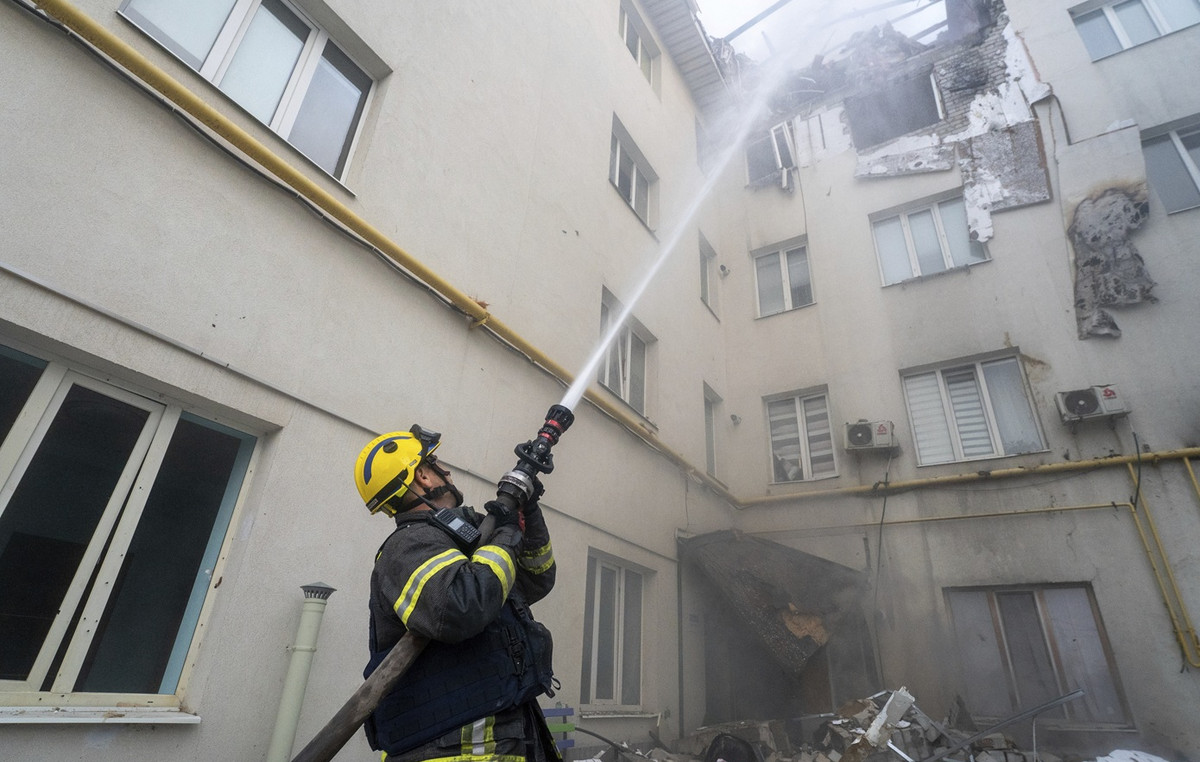This Friday (11), the date on which two years have passed since the World Health Organization (WHO) declared the new coronavirus a pandemic, the new bulletin from the Fiocruz Covid-19 Observatory draws attention to the premature relaxation of protective measures against of the current scenario.
According to the researchers at the Observatory, responsible for the bulletin, it is necessary to be prudent in adopting any measure of flexibility, both because of the possible impact of Carnival and the potential increase in cases and hospitalization, as well as because of the “vaccination that has advanced a lot, but needs to go further.” .
The researchers also advocate the application of a 4th dose of the vaccine against Covid-19 for elderly people aged 70 and over.
“Easing measures such as physical distancing or abandoning the use of masks in an unrestricted way contributes to a possible increase in cases, hospitalizations and deaths, and does not protect us from a new wave”, say the researchers. Another issue highlighted is that of physical distancing, which has returned to the center of attention at the present time, after the carnival holiday.
“The increase in cases, even among those vaccinated, increases the demand for hospitalizations and possibly deaths. Currently, the ideal is to return to the pattern of the beginning of the pandemic, when we strongly recommended the use of masks, hand hygiene and avoiding agglomerations “, they explain.
The bulletin highlights that, during the Ômicron wave, countries that had the largest portions of the population with a booster dose had a substantial reduction in hospitalizations, even with a high number of Covid-19 cases.
In addition, public health strategies that expand coverage and vaccination are also needed – such as vaccine passports in workplaces and closed environments, combined with the use of masks in places where there is no control over the total number of vaccinated or in situations involving a large concentration of people.
With half of the deaths occurring in people aged at least 78 years, who are more vulnerable to severe and fatal forms of Covid-19, the researchers also defend the need to apply a 4th dose in this group, six months after the application of the dose of reinforcement.
At the same time that severe cases are more concentrated at more advanced ages, the contribution of younger groups, especially children, increases in the total number of cases, as pointed out in the Bulletin.
“The greater vulnerability of children, caused mainly by the low adherence of this group to vaccination, also compromises the group that is at the opposite end of the age pyramid”, they point out.
Covid-19 cases and deaths
Data for the last two epidemiological weeks, from February 20 to March 5, confirm the downward trend in indicators of incidence and mortality by Covid-19.
The document points out that there was a 48% decrease in relation to the daily cases of the previous two weeks (from February 6 to 19) and a 33% reduction in the number of deaths from Covid-19 in the same period.
However, these results still do not include the evaluation of the effect of carnival and the flexibility of the use of masks. There has been a slight increase in the fatality rate in recent weeks, indicating that there may be a reduction in the number of cases, however with greater severity among these.
ICU beds for Covid-19
Data on occupancy rates of Covid-19 ICU beds for adults in the SUS obtained between March 7 and 8 confirm the trend of improvement in the indicator seen in previous weeks. The two Federative Units that were in the critical zone (rates equal to or greater than 80%) on February 21 left the alert zone (rates less than 60%). The trend was similar to the one that occurred in nine Federation Units that were in an intermediate alert zone and started to be outside the alert zone.
The only state that remained in the alert zone was Santa Catarina, which showed an increase of 19 percentage points, from a 60% bed occupancy rate on February 21 to 79% on March 8.
In 11 Federation Units, rates dropped quite significantly, around 20 percentage points or more: Acre (60% to 40%), Amapá (40% to 24%), Bahia (58 to 31%), Ceará (58% to 36%), Federal District (100% to 56%), Mato Grosso do Sul (82% to 44%), Mato Grosso (63% to 32%), Paraná (67% to 43%), Rio Grande do Norte (49% to 28%), Sergipe (78% to 49%) and Tocantins (65% to 26%).
Among the capitals with published rates, the city of Rio de Janeiro can be considered within the critical alert zone, with 87% of its Covid-19 ICU beds occupied for adults; or outside the alert zone with 4.7% of beds occupied by patients with active Covid-19, depending on the indicator used, since state data are disaggregated.
Four capitals are on intermediate alert: Salvador (61%), Vitoria (67%), Goiânia (73%) and Porto Alegre (65%). Another 16 capitals are outside the alert zone: Rio Branco (50%), Maceió (38%), Macapá (18%), Manaus (14%), Fortaleza (54%), Campo Grande (56%), Cuiabá (35%), João Pessoa (33%), Curitiba (46%), Recife (30%), Natal (15%), Porto Velho (39%), Florianópolis (26%), São Paulo (38%) and Palmas (30%). Data referring to the capitals Belém (PA), São Luís (MA), Teresina (PI), Boa Vista (RR) and Aracaju (SE) were not available for consultation.
Activity levels and SARS incidence in the country
Severe Acute Respiratory Syndromes (SARS) remain on a downward trend in the number of cases in the country, with an incidence rate estimated, by the moving average, at 1.7 cases per 100,000 inhabitants, which is slightly lower than the values observed in November 2021, shortly before the increase in occurrences due to the Ômicron variant.
SARS records correspond to severe cases of respiratory virus infections that lead to hospitalization or death. Among these records, cases of Covid-19 predominate (87.4% of positive cases) in the last four weeks.
All age groups had a reduction in incidence in recent weeks, with the exception of children up to 11 years of age. The researchers note that these cases in children also include infections with other respiratory viruses and may be related to the back-to-school period.
Overall, the incidence rate remains above one case per 100,000 inhabitants, which is still considered high. “However, as the trend is downward, there is a positive outlook, but it requires the maintenance of efforts so that this decline continues sustained for more weeks. The importance of vaccination remains, including booster doses, combined with other protective measures, by the spheres of government and the population”, they guide.
Source: CNN Brasil







